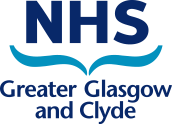Dapagliflozin for Symptomatic Chronic Heart Failure with Reduced Ejection Fraction
Key Points
- The sodium-glucose co-transporter-2 inhibitor (SGLT2i) dapagliflozin has been accepted by SMC for treatment of symptomatic chronic heart failure with reduced ejection fraction (HFrEF) in adult patients with or without diabetes
- Dapagliflozin is NHSGGC Formulary preferred list for HFrEF indication, restricted to specialist initiation
- Updated NHSGGC Heart Failure guidelines will follow and include specific advice and a treatment algorithm incorporating SGLT2i prescribing
DAPA-HF Dapagliflozin in Patients with Heart Failure and Reduced Ejection Fraction | NEJM
The Dapagliflozin And Prevention of Adverse outcomes in Heart Failure (DAPA-HF) trial randomised 4,744 patients with New York Heart Association class II-IV HFrEF (left ventricular ejection fraction ≤40%) to dapagliflozin 10mg daily or placebo. Patients with or without type II diabetes (T2DM) were included. Patients with type I diabetes (T1DM) were excluded. Patients with eGFR ≥30 mL/min/1.73 m2 at enrolment were included. Participants were well treated at baseline with background standard of care HF therapy; 94% were receiving angiotensin converting enzyme inhibitor/angiotensin II receptor antagonist/angiotensin receptor neprilysin inhibitor, 96% beta-blocker, 71% mineralocorticoid receptor antagonist and 93% diuretic. 26% had an implantable cardiac device.
Efficacy and Safety
Over a median of 18 months, dapagliflozin was superior to placebo in preventing the primary composite endpoint of cardiovascular death, HF hospitalisation or urgent HF visit. This effect was observed early and sustained throughout the duration of the study. Patients reported clinically meaningful reduction in symptom burden and improved quality of life. Treatment benefit was observed in HF patients both with and without T2DM. Benefit was consistent across other key sub-groups including concomitant HF therapy, renal function, age and gender. Major hypoglycaemic events were reported in 4 (0.2%) of patients in both the dapagliflozin and placebo arms and observed only in patients with T2DM.
Prescribing Advice
Risk of hypoglycaemia is increased in patients achieving their glycaemic target and/or when dapagliflozin is used in combination with sulfonylurea or insulin. Patients receiving either agent should ideally be discussed with the health care professional supporting their T2DM management, prior to commencing dapagliflozin. They should continue to monitor blood glucose levels closely. As dapagliflozin does not affect HbA1c in patients without diabetes, no additional monitoring is required. Patients with T2DM should be educated about an increased risk of genital tract infection and diabetic ketoacidosis. They should be advised to withhold dapagliflozin and to seek medical advice during significant intercurrent illness e.g. gastroenteritis. Dapagliflozin should not be used to treat HFrEF in patients with T1DM. Diuretic therapy, renal function and blood pressure should be assessed when initiating dapagliflozin, due to the potential for increased early diuresis and volume depletion.
Refer to the Summary of Product Characteristics for full prescribing information.
Published 09/06/2021. Medicines Update blogs are correct at the time of publication.
